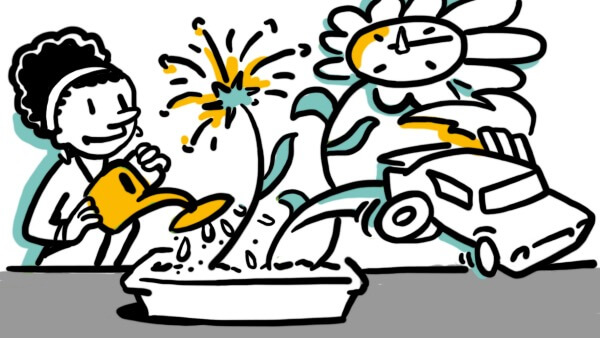5 ways to Incorporate Creative Content into L&D
You know the Learning and Development team plays a vital role. They’re intrinsic when it comes to attracting a prospective employee, retaining that employee and keeping them actively motivated and engaged. They’re a go-to resource for deepening the capabilities of even your most seasoned talent. And they often help to define and promote culture and values across multiple teams and functions.
A successful company often depends on a successful Learning and Development strategy. And when it comes to employee-focused areas like L&D, a little creativity can go a long way towards making a difference.
Here are five ways you can leverage creative content to give your L&D strategy a boost.
Incentivize Innovation
Prominent L&D consulting firm Caveo Learning suggests that L&D teams pave the way towards overall innovation by actively encouraging creativity from management on down. This is all about cultivating fertile ground for creative thinking that permeates throughout an organization. Train your people on best practices for stimulating creativity; then put those practices into practice.
Here are some examples. Designate physical spaces within the workplace specifically for creation and ideation, or start each meeting with a creative exercise. Check out design thinking principles to get ideas flowing if you still aren’t quite sure where to start.
And once you have your innovative thinking blueprint, be sure to promote the concepts with creative content. Map out the designated “creative zones” in a colorful infographic hung in a common space. Make a micro video showcasing a creative exercise that doubles as a meeting icebreaker.
Expand Your Reach
Technology can simultaneously make the world feel bigger and smaller. Seminars and workshops used to require lots of people traveling many miles to gather in the same place, but now they can now be held virtually. However, webinars compete for attention with email inboxes, text messages, and IMs all happening on the same computer screen.
Think outside the Powerpoint and add creative elements to your presentations (whether they’re happening virtually, IRL, or both). You’ll have a more actively engaged audience by focusing not on information, but on a story. Brush up on your storytelling skills to deliver powerful presentations that hold attention. You may want to do away with the Powerpoint altogether. Instead you could turn to a whiteboard video or an infographic to activate the brain more effectively. One stat estimates that people process visuals 60000 times faster than text, so ditch the cumbersome slideshow in favor of something that will grab a viewer’s brain and keep it focused on your message – even long after the meeting ends.
Introduce New Trends
Creative content can often be a bridge between the old and new. Many forms of creative content are fully equipped for mobile-first learning. This includes including video, infographics, interactive blog posts, and VR and AR. Mobile-first learning is a definite hot topic across L&D right now. And with 37% of organizations using some type of AI, having AI-ready creative content at your disposal is critical. This could mean developing AI-dependent interactive modules into your LMS. Your users then benefit from content personalized directly for them, using data gleaned from AI. You can create automated training emails or portals with AI that are fully customized to their learning preferences.
Increase Engagement
Increasing engagement includes eyecatching visual learning tools. According to Forrester Research, employees are 75% more likely to watch a video than read educational content. But go a step beyond using video and be strategic to get your employees more engaged. That means avoiding talking heads in favor of motion graphics or whiteboard animation for your learning and development content. Key pieces of content, especially quizzes and training, could also benefit from interactive video. 28% of businesses planned to leverage some type of interactive video last year.
Opt out of traditional wall of text manuals and instead, choose infographics. These snappy, elegant images are a great way to share a lot of information in a memorable manner. And stats show that people are 30 times more likely to read an infographic than to read an article or other type of longform content.
And think about adding interaction to your live events as well – graphic facilitation or livescribing is an excellent way to facilitate interest and engagement, and you may also gain a wealth of content that can be used in follow-up sessions, via email, or in print.
Uncover Unknown Potential
As creativity becomes more a more prominent factor in business success, there is a push to quantify and classify creativity in the workplace. Interesting trends have emerged – one broad study by Adobe identifies three broad categories of creativity: personal, connective, and environmental. The HR Technologist posits that L&D is perfectly poised to deliver creative content to those who fit into each category, meeting each learner where they are and truly focusing on their developmental potential. This means microlearning modules for the 28% of people who identify as those who find the most creativity in their own personal downtime. Social learning, via platforms like Snapchat or Teams, is great for the 30% who consider themselves connective. And finally, more formalized onsite training might be the most appropriate for the 35% who gain the most creative clarity from their immediate environment.

